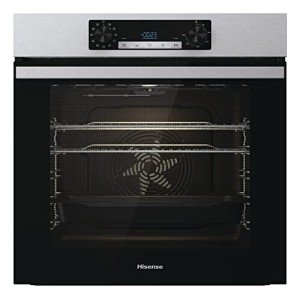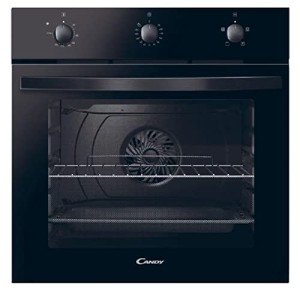10 Quick Tips To Single Built In Oven
페이지 정보
작성자 작성일25-06-18 23:34 조회8회 댓글0건관련링크
본문
The Comprehensive Guide to Single Built-In Ovens: Features, Benefits, and FAQs
Introduction
In contemporary kitchen areas, the integration of devices is key to accomplishing a streamlined style. Amongst these home appliances, the built-in oven stands apart as a staple for daily cooking. In specific, single built-in ovens are gaining appeal due to their space-saving design and efficiency. This article explores the functions, benefits, and frequently asked concerns about single fan Oven electric built-in ovens, assisting homeowners make notified choices.
What is a Single Built-In Oven?
A single built-in oven is a cooking appliance created to be embedded within kitchen cabinetry, providing a smooth look that matches the kitchen's aesthetic. Unlike freestanding ovens, built-in versions provide a variety of features and styles that accommodate modern cooking requirements.
Key Features of a Single Built-In Oven
Single built-in ovens included a range of functions that improve performance and user experience. Here are a few of the most essential characteristics:
| Feature | Description |
|---|---|
| Size and Capacity | Usually varies from 24 to 30 inches in width; ideal for various kitchen sizes. |
| Cooking Modes | Several settings, including convection, baking, broiling, and often steam cooking. |
| Controls | Digital touch controls or traditional knobs with precise temperature level settings. |
| Self-Cleaning Options | Numerous models include self-cleaning functions for simpler maintenance. |
| Energy Efficiency | Designed to consume less energy, frequently with an A+ energy ranking. |
| Security Features | Includes child locks, cooling systems, and temperature level sensors. |
| Design Options | Readily available in various finishes (stainless steel, black, and so on) and designs (modern, timeless). |
Advantages of Using a Single Built-In Oven
The adoption of single built-in ovens provides numerous advantages:

- Aesthetics: They develop a contemporary and polished appearance in the kitchen, mixing effortlessly with kitchen cabinetry.
- Space-Saving: Ideal for smaller sized kitchens, they are created to enhance space by being built into walls or cabinets.
- Increased Functionality: Many models feature sophisticated cooking innovation such as wise functions that enable push-button control via smart device.
- Easy to Use: With user-friendly controls, built-in ovens are user-friendly and appropriate for both newbie and skilled cooks.
- Improved Cooking Performance: Convection designs distribute hot air for even cooking outcomes.
Popular Brands and Models
Several brands control the single built-in oven market, each offering distinct functions to accommodate customer preferences. Here are some notable ones:
| Brand | Popular Models | Key Features |
|---|---|---|
| Bosch | HBN8451UC, HBL8453UC | European style, convection heat, Wi-Fi connection. |
| Electrolux | E30SO75GPS, E30SO75PPS | Variations in size, advanced barbecuing capabilities. |
| Samsung | NV51K6650SG | Dual convection, smart technology, versatile cooking modes. |
| Whirlpool | WOS51EC0HS | Budget friendly, reputable, self-cleaning functions. |
| LG | LWS3063ST | Smart technology, air fry mode, sleek visual appeals. |
Setup Considerations
Installing a single built-in oven includes particular considerations:
- Measurement: Ensure that the area allocated is suitable with the oven's dimensions.
- Ventilation: Adequate air flow should be maintained for security and effectiveness.
- Electrical Needs: Check voltage requirements and guarantee proper electrical outlets are available.
- Professional Installation: While some property owners might choose DIY, working with a specialist can alleviate installation problems.
Often Asked Questions (FAQs)
How much area is needed for a built-in oven?
- A built-in oven generally needs a designated space that varies by design, generally from 24 to 30 inches in width. Constantly describe the manufacturer's specifications for accurate measurements.
Can I set up a built-in oven by myself?
- While some may attempt a DIY installation, it is frequently suggested to employ a professional to make sure correct fitting, electrical connections, and ventilation.
Are single built-in ovens more expensive than freestanding models?

- Normally, yes. Single built-in ovens tend to cost more due to their design, setup, and additional functions.
What are the differences between convection and regular ovens?
- Convection ovens have a fan that circulates hot air throughout, leading to even cooking. Standard ovens rely on glowing heat, which might lead to hot spots and irregular cooking.
What upkeep is needed for a built-in oven?
- Regular cleansing, making sure vents stay unobstructed, and monitoring functions. Numerous designs offer self-cleaning choices, which simplify upkeep.
Single built-in ovens represent a merging of style, convenience, and efficiency in contemporary cooking areas. With a huge selection of features and designs offered, these ovens deal with numerous cooking needs and preferences. Whether you are a hopeful chef or an occasional home cook, acquiring an appropriate single built-in oven can boost your cooking experience while elevating your kitchen's visual. Mindful factor to consider of features, installation requirements, and upkeep will lead to a rewarding investment in this essential kitchen appliance.





